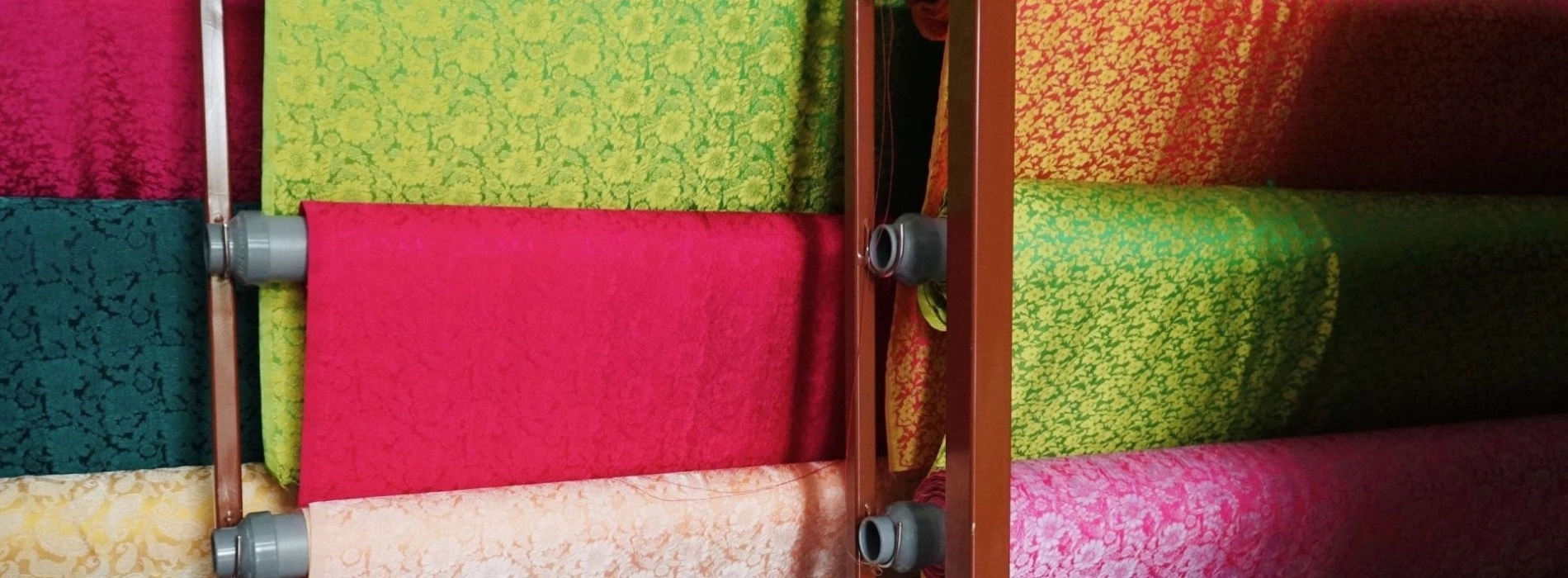Nha Xa Silk Village

Nestled along the banks of the Red River, Nha Xa Silk Village has long been renowned for its exquisite silk. With a history spanning hundreds of years, the village showcases the refined weaving skills of its artisans. Let Asia King Travel guide you in discovering the timeless cultural heritage of Nha Xa Village!
.jpg)
Nha Xa Village contributes to creating the Vietnamese silk brand on the international map
Nha Xa Silk Village is located at Moc Nam Commune, Duy Tien District, Ha Nam Province (now Moc Hoan Commune, Ninh Binh Province). Nha Xa Village, along with the other 3 silk villages: Van Phuc (Ha Dong), Tan Chau (An Giang), and Hoi An (Quang Nam), has created the Vietnamese silk brand on the international map.
Nha Xa Village is not too far from Hanoi (about 65 km), so getting there is quite convenient. You can travel by car or motorbike. In that case, follow National Highway 1A or Phap Van-Cau Gie Expressway toward Phu Ly City. From there, continue about 5-7 km to Nha Xa Village. The whole trip takes around 1.5 hours.
Traveling by bus is a better choice for those who aren’t familiar with Vietnamese traffic. Take a bus from Giap Bat or Nuoc Ngam bus stations in Hanoi to Phu Ly, and then grab a taxi or motorbike taxi to reach the village.
.jpg)
Nha Xa Village produces the top-quality silk
You can visit Nha Xa Silk Village any time of the year, as the weaving workshops operate daily. However, the most pleasant months are from October to April, during the cool, dry season in northern Vietnam. The weather is comfortable for walking around the village and watching artisans at work.
If you want a more festive atmosphere, plan your trip during the Lunar New Year (Tet, usually January-February), when silk products are in high demand and the village becomes especially lively. This is also the time when you’ll see the widest variety of fabrics, as families prepare for the holiday season.
You may like: Vietnam's Traditional Craft Villages: Timeless Beauty
According to local legend, during the Tran dynasty, General Tran Khanh Du once passed through this area by boat. Seeing that the land was fertile but the people lived in poverty, he taught them how to grow mulberries, raise silkworms, and weave silk. Following his guidance, the villagers produced beautiful silk fabrics of exceptional quality.
Word of this fine silk soon spread far and wide. Traders from different regions began flocking to Nha Xa Village, and at times, villagers even carried bundles of silk on their shoulders to the Red River, where they were shipped to the imperial capital or distributed across the country. From that moment, Nha Xa silk earned its reputation as one of the finest in Vietnam.
.jpg)
Nha Xa Silk is renowned thanks to its exceptional quality
The traditional silk weaving process in Nha Xa Village once involved five stages, from growing mulberries and raising silkworms to weaving the finished fabric. However, as mulberry fields have gradually shrunk, local artisans now import high-quality threads from external suppliers. In this article, we will introduce the original five-step process that shaped Nha Xa’s silk weaving tradition.
The suppliers and artists must supply abundant mulberry leaves regularly to make these silkworms grow. It goes on for 23-25 days, until they are ready to spin their cocoons.
When the silkworms are ready to spin their cocoons, they are placed onto special frames. They secrete a protein continuously for about 48 hours that will be the silk thread. The silkworms spin and wrap themselves inside the cocoon for about 7 days.
They can spin up to 1 kilometer of silk in this time. Following the spinning, the silkworms will remain in the cocoon and transform into pupae. This is the ideal time to harvest the cocoons for the next stage.
.jpg)
The artisans in Nha Xa Silk Village have preserved their techniques for generations
Unwinding the silk fibers from the cocoon is the next stage. The cocoon is first immersed in hot water to dissolve the gummy substance that binds the threads together. Then the silk threads are carefully unwound and gathered to be spun into a single thread. Generally, 10 threads from 10 cocoons are wound together to create a thicker and stronger thread. This is the step where raw silk threads are readied for weaving.
During this stage, the threads of silk are woven into fabric. The density and thickness of the threads determine the final texture and quality of the silk fabric. Quality is typically measured in momme, which means the thickness and weight of the fabric. There are a variety of weave patterns, such as satin, plain weave, twill, and Jacquard, each of which is responsible for the variation in the fabric.
At Nha Xa Silk Village, the artisans naturally dyed the silk using natural plant-based dyes. Natural dyes are derived from plants, herbs, and other natural sources. In this manner, artisans could produce only plain dyed silk. Now, with technology, more and more exquisite designs are being created, rendering the village products more varied.
.jpg)
The artisan dries the fabric after dyeing
Despite the challenges of modernization, Nha Xa continues to preserve its heritage while adapting to new market demands. During your trip, you will have a chance to explore the beauty of Vietnamese craftsmanship and purchase elaborate mulberry silk. If you’re interested, don’t hesitate to contact Asia King Travel and let us plan your wonderful trip to Vietnam!
You may like: Ninh Binh Tours